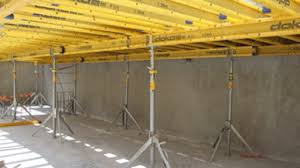Oct . 12, 2024 19:10 Back to list
timber h20 formwork
The Importance of Timber H20 Formwork in Construction
In the construction industry, one of the critical elements that determine the efficiency, safety, and quality of a project is the formwork system utilized. Among the various formwork options, Timber H20 formwork has gained considerable attention due to its unique composition, reliability, and adaptability. This article explores the significance of Timber H20 formwork in modern construction and its advantages over traditional formwork systems.
What is Timber H20 Formwork?
Timber H20 formwork is a modular formwork system primarily composed of H20 beams made from durable, high-quality timber. These beams are designed to be lightweight, yet extremely strong, offering an excellent alternative to traditional concrete or steel formwork. The “H20” designation refers to the shape and dimensions of the beams, which are typically 200 mm deep and designed to maintain rigidity and stability while supporting various construction elements.
This formwork system is often used for creating slabs, walls, and other concrete structures, and its modular nature allows for rapid assembly and disassembly, which can save both time and labor costs on the job site.
Advantages of Timber H20 Formwork
1. Lightweight and Easy to Handle Timber H20 beams are significantly lighter than their steel counterparts, making them easier to transport and manipulate on-site. This lightweight quality not only reduces the risk of injury but also allows for quicker setups and takedowns, enabling contractors to complete projects faster.
timber h20 formwork

2. Cost-Effective The cost-effectiveness of Timber H20 formwork stems from its durability and reusability. Unlike traditional timber formwork, which may deteriorate after a few uses, Timber H20 can withstand multiple cycles of pouring concrete without losing structural integrity. This durability lowers long-term material costs and minimizes waste.
3. Versatility One of the standout features of Timber H20 formwork is its versatility. It can be adapted to a variety of concrete pouring applications, including complex shapes and sizes. The modular system allows for customization based on the specific needs of a project, whether it be residential, commercial, or industrial.
4. Quality Finish Timber H20 formwork provides a seamless and smooth surface for the concrete that is poured against it. This results in a high-quality finish that requires less finishing work, subsequently reducing both time and labor costs involved in surface treatment.
5. Sustainability As environmental concerns continue to rise, Timber H20 formwork presents a more sustainable option compared to traditional materials. Timber, when sourced responsibly, can have a smaller carbon footprint. Moreover, its reusability aligns with sustainable construction practices, minimizing waste generated on job sites.
6. Enhanced Safety The design of Timber H20 formwork includes features that enhance safety on construction sites. The lightweight nature of the system reduces the risk of accidents due to heavy lifting, and the modular components are designed for stability, which is crucial when supporting heavy loads of wet concrete.
Conclusion
Timber H20 formwork serves as an excellent alternative to traditional construction methods. Its lightweight nature, cost-effectiveness, versatility, and sustainability make it an appealing choice for a diverse range of construction projects. As the industry continues to evolve and prioritize efficiency and safety, Timber H20 formwork will likely play an increasingly pivotal role in the future of construction. For contractors seeking to improve their workflows while achieving high-quality results, incorporating Timber H20 formwork into their toolkit may very well be the key to success in modern construction practices.
-
High-Quality U Head Jack Scaffolding – Reliable Scaffolding Jack Head Manufacturer & Factory
NewsJul.08,2025
-
High-Quality I Beam H20 Leading Timber Beam H20 Material Factory, Exporters & Manufacturers
NewsJul.08,2025
-
High-Quality Powder Coating Steel Formwork - Durable & Corrosion Resistant Solutions
NewsJul.07,2025
-
Inclined Column Formwork Supplier – Durable & Precise Solutions for Unique Structures
NewsJul.07,2025
-
High-Quality Water Stop Solutions Trusted Water Stop Company & Suppliers
NewsJul.07,2025
-
High-Quality Formwork Material Supplier Reliable Manufacturer & Factory Solutions
NewsJul.06,2025